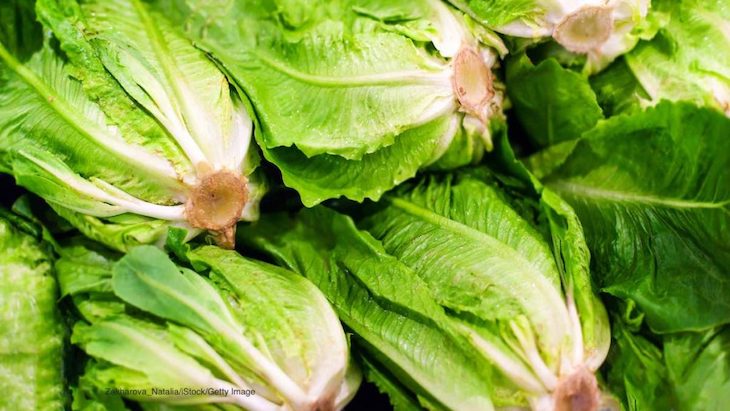After the two romaine E. coli O157:H7 outbreaks last year, that together sickened 272 people in the U.S., the California Leafy Greens Marketing Agreement (LGMA) has been amended to include more food safety practices on farms. More than 120 people were hospitalized in those outbreaks, and five people died.

Scott Horsfall, CEO of the LGMA, said in a statement, “The California Leafy Greens Marketing Agreement Board of Directors have adopted additional requirements to reduce risk when it comes to water used in growing lettuce and leafy greens. This means that every box of leafy greens placed into commerce by a certified LGMA member will now be produced under new, more stringent requirements.”
In the two romaine E. coli O157:H67 outbreaks, the outbreak strains of the pathogen were found in water near the produce farms. In the first outbreak, which occurred during the spring of 2018 and was deadly, investigators found the outbreak strain of E. coli in canal water near farms in Yuma, Arizona. In the second outbreak, which occurred during the fall and winter of 2018, the bacteria was found in sediment in agricultural water on Adams Bros. Farming farm in central California.
This water can be contaminated several ways. First, if the water is near a CAFO (Concentrated Animal Feeding Operation), feces from cows or other ruminant animals can leach into the water. Any wild animal that comes into contact with the water can contaminate it with different pathogens. And people can dump trash nearby; any fecal matter in that trash can add the bacteria.
Last year, LGMA issued new regulations, which included daily equipment cleaning, review of impact on crops after severe weather, traceability measures, and longer buffer zones between farm fields and animal feedlots.
The new LGMA protocol updates will require growers to categorize the source of the water, consider how and when the fields are irrigated, test irrigation water to see if it’s safe, and sanitize the water if needed. And growers will no longer be able to use untreated surface water for overhead irrigation of these crops in the 21 days before harvest. The LGMA program also requires mandatory government audits of member farms.
These measures go above and beyond the federal Produce Safety Rule that is part of the 2011 Food Safety Modernization Act (FSMA). Unfortunately, stricter standards for irrigation water, which are part of FSMA, have not been finalized.
Growers in the Yuma, Arizona region have also made recommendations about growing leafy greens, improving traceability and increasing sanitation protocols. Increasing buffer zones between animals farms and produce fields is another recommended preventative measure, according to the Yuma Safe Produce Council.
After the new measures were put in place by the Yuma group last fall, scientists at Consumer Reports released a report stating that they are not convinced that these actions are going to prevent future outbreaks. While they are glad that growers are taking the initiative to make their products safe, they say that these new recommendations may not be enough to fix the problem.
Jean Halloran, director of food policy initiatives at Consumer Reports said in a statement, “The FDA has not yet done everything it can and should do to make sure we don’t have new outbreaks this season. The FDA is suggesting growers keep their water safe, but what does that mean? In a situation like this, where the outbreak strain was found in water in an irrigation anal, growers should be testing their irrigation water frequently – weekly, if not daily.” Halloran also thinks that leafy green farms and processing facilities should be inspected more often by the government.
In addition, Consumer Reports experts state that buffer zones may not be big enough or far enough way from farm fields. E. coli bacteria can become airborne and travel for hundreds of feet. And in water, the pathogen can travel for longer distances.
We will see if these new measures by the LGMA and the Yuma Safe Produce Council will be effective. The romaine growing season in Yuma, Arizona is underway. In last year’s outbreak linked to romaine grown in that region, illness onset dates ranged from March 13 to June 6.




